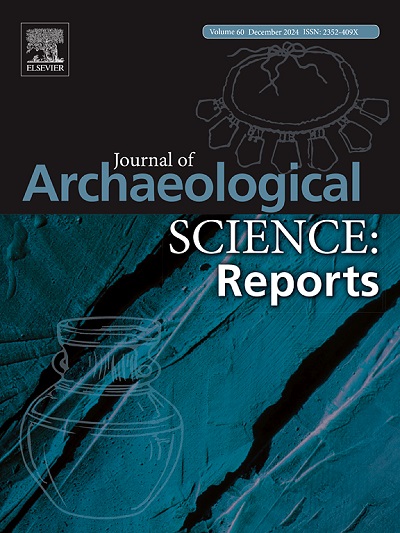Mercury contamination in ancient water reservoirs at the Maya city of Ucanal, Guatemala
IF 1.5
2区 历史学
0 ARCHAEOLOGY
引用次数: 0
Abstract
Although the use of mercury in the form of cinnabar (HgS) by the ancient Maya has been widely documented, there are few datasets available to understand potential exposure to mercury from ancient Maya reservoirs. This study analyzed the chemical composition of stratigraphically excavated dried sediments from 3 ancient water reservoirs located in different zones and social contexts at the site of Ucanal, Guatemala, to determine how potential contamination of water reservoirs varied through space and time. High levels of mercury, relative to natural concentrations in soils, were identified throughout the complete temporal sequence and were omnipresent in all three water reservoirs, indicating that mercury contamination may have affected both elite and non-elite sectors of the population. Average total mercury concentrations in the reservoirs’ sediments were above 1 g/g, the toxic effect threshold above which freshwater ecosystem sediments are deemed to be heavily polluted. A sharp increase in mercury was recorded for the Terminal Classic period, when the city reached its apogee, with average concentrations of 3.08 g/g for Aguada 2, 11.88 g/g for Aguada 3 and 3.17 g/g for Piscina 2. Non-reservoir soil samples also show mercury contamination throughout the city core, a situation which would have led to the accumulation of mercury in water reservoirs through its mobilization within the various drainage areas.
危地马拉乌卡纳尔玛雅古城水库的汞污染问题
尽管古玛雅人使用朱砂形式的汞(HgS)的情况已被广泛记载,但要了解古玛雅水库中汞的潜在暴露情况,可用的数据集却很少。本研究分析了危地马拉乌卡纳尔遗址中位于不同区域和社会背景的 3 个古代水库中按地层挖掘出的干燥沉积物的化学成分,以确定水库的潜在污染在空间和时间上的变化情况。与土壤中的自然浓度相比,在整个时间序列中都发现了高浓度的汞,并且在所有三个水库中无处不在,这表明汞污染可能影响了人口中的精英阶层和非精英阶层。水库沉积物中的平均总汞浓度超过了 1 μg/g,超过这一毒性效应阈值,淡水生态系统沉积物就被认为受到了严重污染。根据记录,在城市达到顶峰的 Terminal Classic 时期,汞含量急剧增加,Aguada 2 号水库、Aguada 3 号水库和 Piscina 2 号水库的平均浓度分别为 3.08 微克/克、11.88 微克/克和 3.17 微克/克。非水库土壤样本也显示汞污染遍及整个城市核心,这种情况可能导致汞在各排水区内流动而在水 库中积累。
本文章由计算机程序翻译,如有差异,请以英文原文为准。
求助全文
约1分钟内获得全文
求助全文
来源期刊

Journal of Archaeological Science-Reports
ARCHAEOLOGY-
CiteScore
3.10
自引率
12.50%
发文量
405
期刊介绍:
Journal of Archaeological Science: Reports is aimed at archaeologists and scientists engaged with the application of scientific techniques and methodologies to all areas of archaeology. The journal focuses on the results of the application of scientific methods to archaeological problems and debates. It will provide a forum for reviews and scientific debate of issues in scientific archaeology and their impact in the wider subject. Journal of Archaeological Science: Reports will publish papers of excellent archaeological science, with regional or wider interest. This will include case studies, reviews and short papers where an established scientific technique sheds light on archaeological questions and debates.
 求助内容:
求助内容: 应助结果提醒方式:
应助结果提醒方式:


